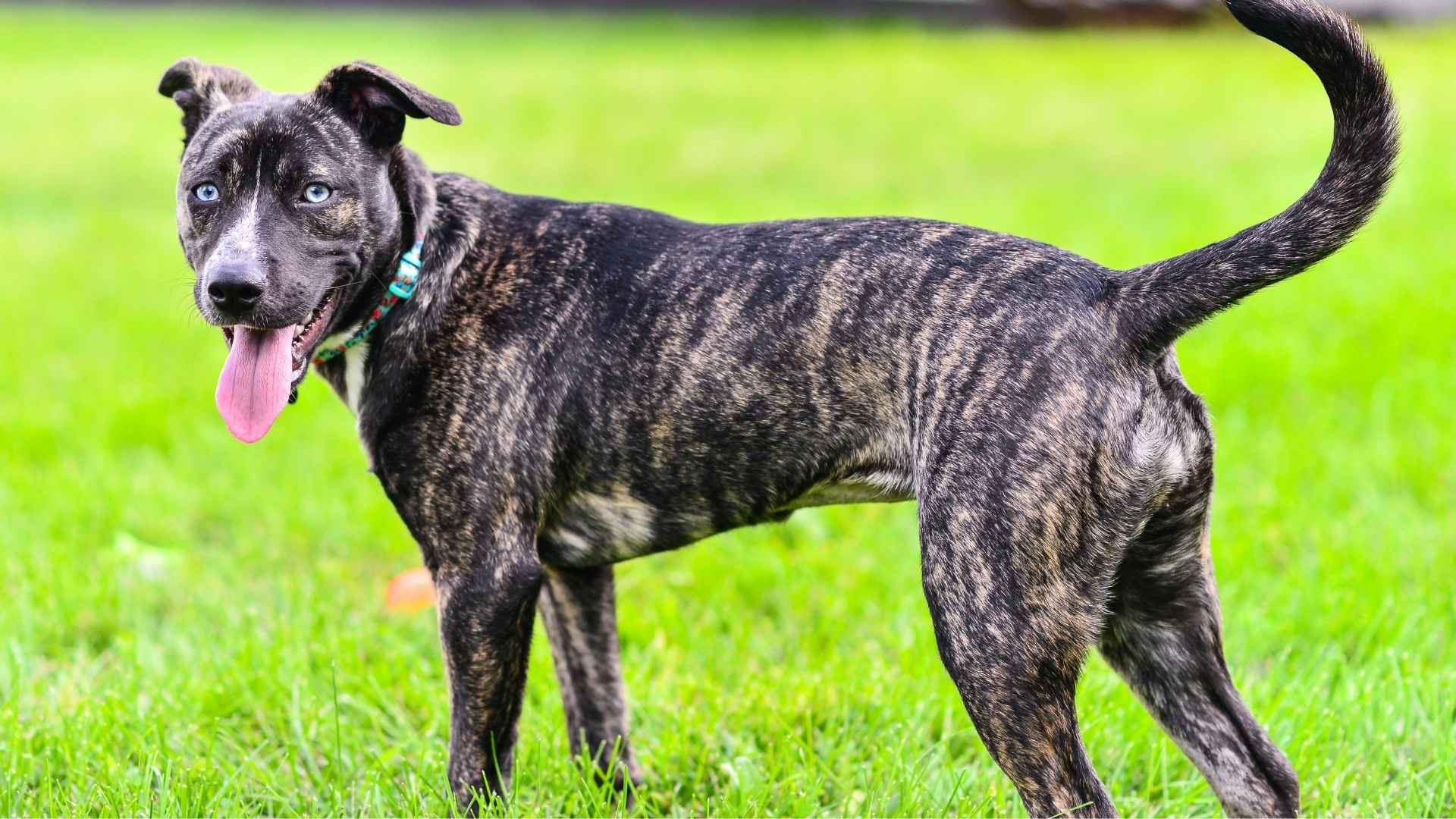Ever spotted a dog with a coat that looks like it was swirled together by an artist? That eye-catching, tiger-striped pattern? Yep—that’s brindle. But here’s the kicker: some of these brindle beauties don’t just turn heads; they stick around for the long haul, too. We’re talking about pups that live long, healthy lives and rock one of the coolest coats in the canine world.
Why settle for a dog with either looks or longevity when you can have both? Brindle dogs with long lifespans offer the best of both worlds—style and staying power. They’re not just pretty faces; they’re loyal companions who grow old right beside you.
And let’s be real: who doesn’t want a dog that ages like fine wine? If you’re searching for a four-legged friend who brings personality, good looks, and the gift of time, you’re in for a treat. Let’s dive into these brindle wonders.
Brindle Dog Breeds with a long lifespan
1. Cairn Terrier
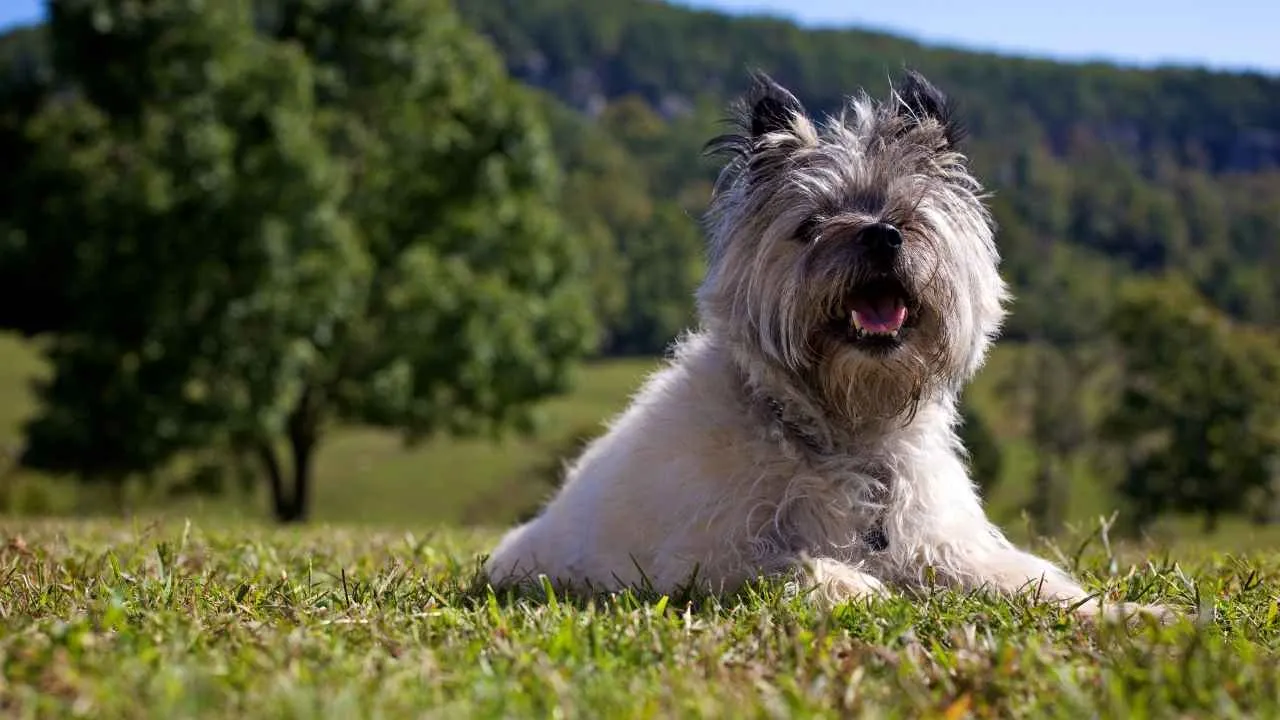
The Cairn Terrier may be pint-sized, but this little brindle ball of energy is fearless, sharp-witted, and surprisingly long-lived, often making it to 13–16 years. Originally bred to root out foxes and vermin in Scotland, they’ve kept their rugged personality and boundless curiosity intact.
They’re small but not dainty. Cairns have a weather-resistant double coat that often comes in eye-catching brindle patterns. This scruffy, tousled look isn’t just adorable—it helps protect them from harsh climates and brush. No two brindle coats are the same, and their colors often change as they age, giving them a “forever-evolving” look.
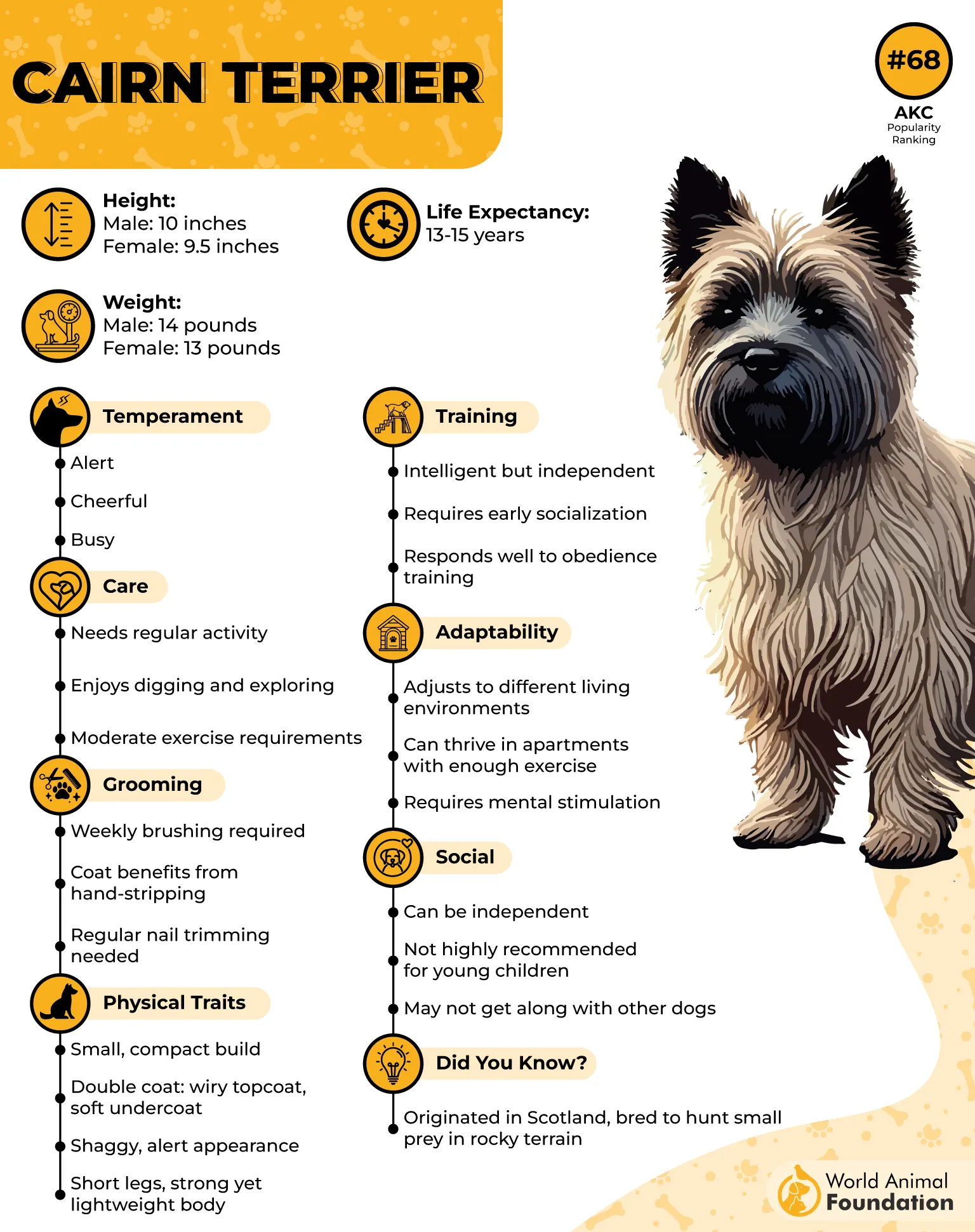
Their lifespan isn’t just long—it’s active. Even senior Cairns love a game of chase or digging up a mysterious patch in the yard. They stay mentally alert because they’re constantly engaged with the world. Whether it’s a squirrel in the distance or a new smell in the garden, there’s always something to investigate.
Cairns are fantastic watchdogs—not because they’re aggressive, but because they’re alert and courageous, says PetMD. They’ll let you know if someone’s approaching, but won’t turn into a bark machine unless you let bad habits creep in. That confidence also makes them excellent companions for kids, as long as the kids respect their space.
Their activity level is just right—playful indoors, lively outdoors. A brisk walk and some mental games will keep them satisfied. They’re not destructive, but if they don’t get enough stimulation, that terrier instinct might kick in, and your flowerbed could become an archaeological dig site.
Fun Fact: The most famous Cairn Terrier in the world? Toto from The Wizard of Oz! Yep, that spunky little scene-stealer was a brindle Cairn who became a Hollywood icon.
2. Dutch Shepherd
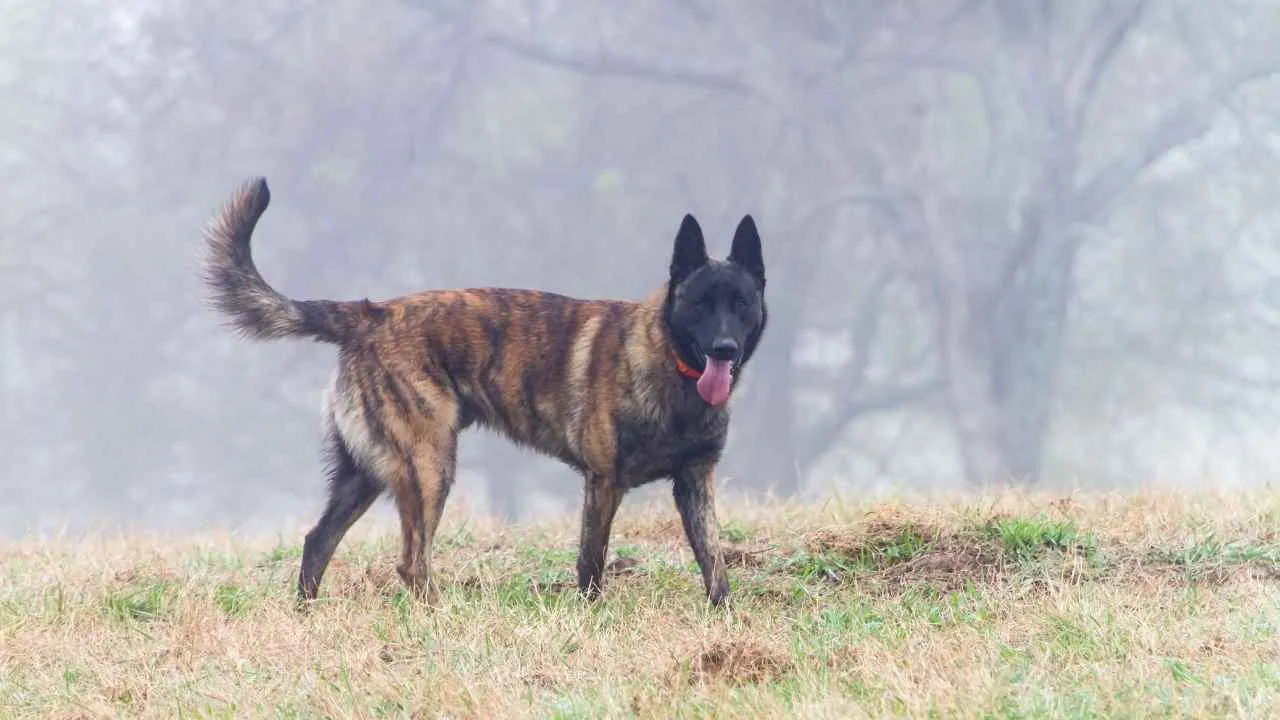
Dutch Shepherds are instantly recognizable by their dark, brindle-striped coats and sharp, fox-like expressions. Their unique coat helps them blend into fields, which makes them ideal herders and farm dogs. Tough, alert, and ridiculously trainable—they’re kind of like the Swiss army knife of dogs.
Despite their working roots, they’re incredibly adaptable. Whether it’s agility, scent work, or learning tricks on the fly, they stay sharp and focused. They thrive in active households where their brain gets as much of a workout as their body.
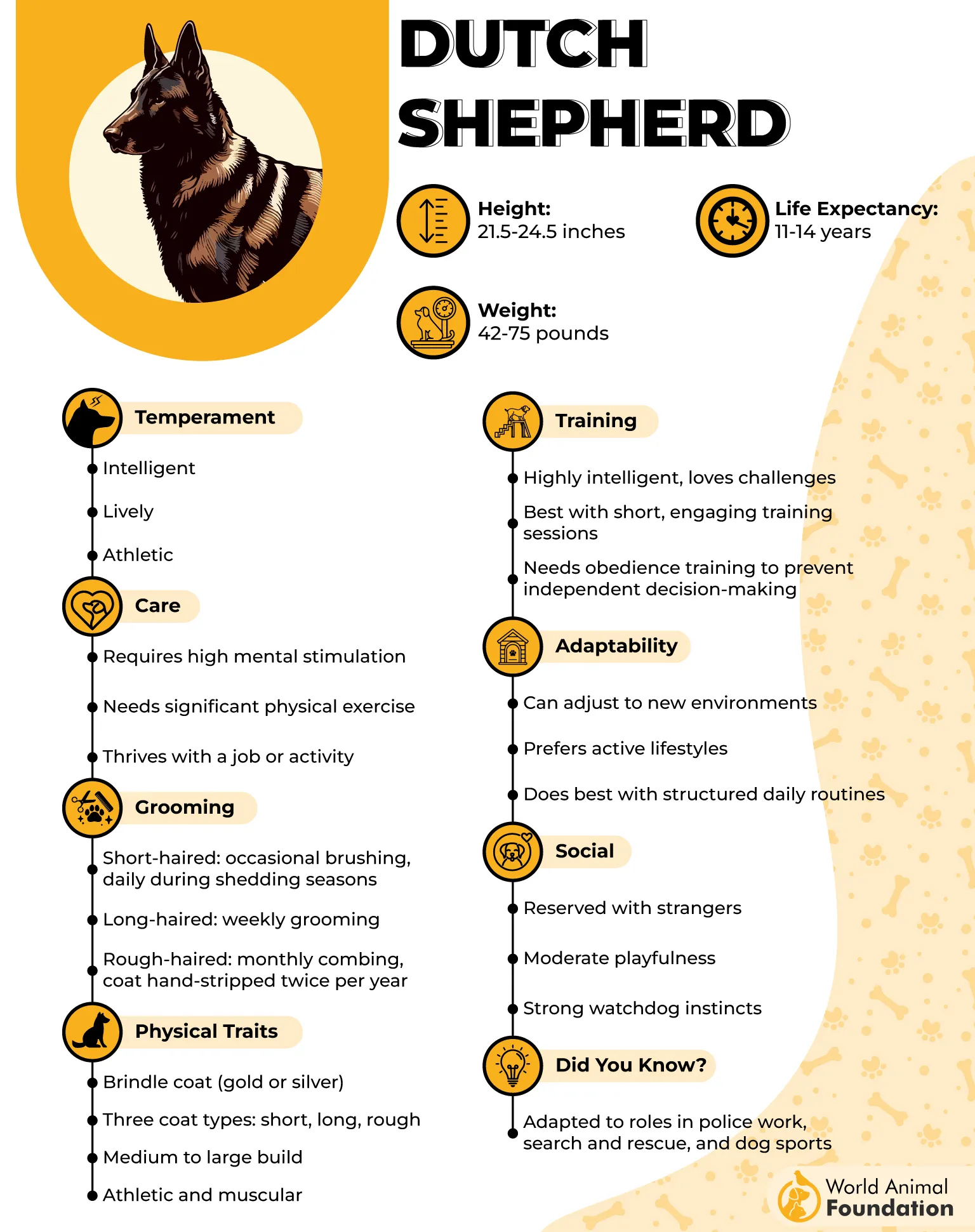
Dutch Shepherds form tight bonds with their people and tend to stick close. AKC states that they’re naturally protective and loyalbut not overly aggressive—just the right mix of watchful and warm. With consistent socialization, they’re solid around strangers and respectful with other pets.
These dogs love having a job—any job. Whether it’s running trails, training sessions, or playing hide-and-seek with their toys, they crave purpose. Mental stimulation isn’t optional with this breed—it’s mandatory. A Dutch Shepherd without an outlet will invent one—digging holes, opening cabinets, or trying to herd your kids.
They’re surprisingly low-maintenance when it comes to grooming. Their short, dense coats shed seasonally and need weekly brushing. Brindle isn’t just pretty—it helps hide dirt and gives them that natural, “I woke up like this” look.
3. Greyhound
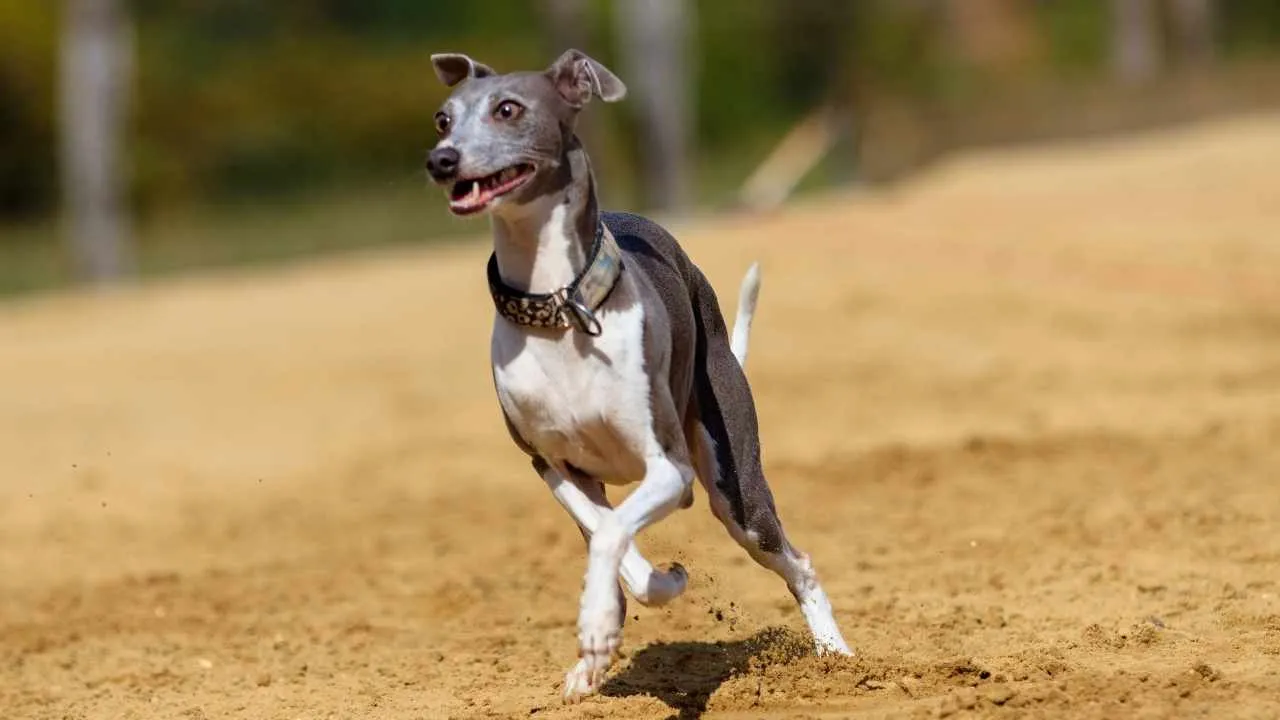
Greyhounds are built like athletes—long legs, deep chests, and lean muscles meant for acceleration. Their brindle coats add a wild, tiger-stripe elegance that makes each one feel custom-designed. With a lifespan of 12–14 years, they’re surprisingly long-lived for such a large breed.
You’d think a dog bred to chase mechanical rabbits would be wild indoors—but nope, they’re total couch loungers. Greyhounds are famous for their love of napping, often curling into the tiniest ball despite their size. It’s like living with a giant, sleepy cat in a dog’s body.
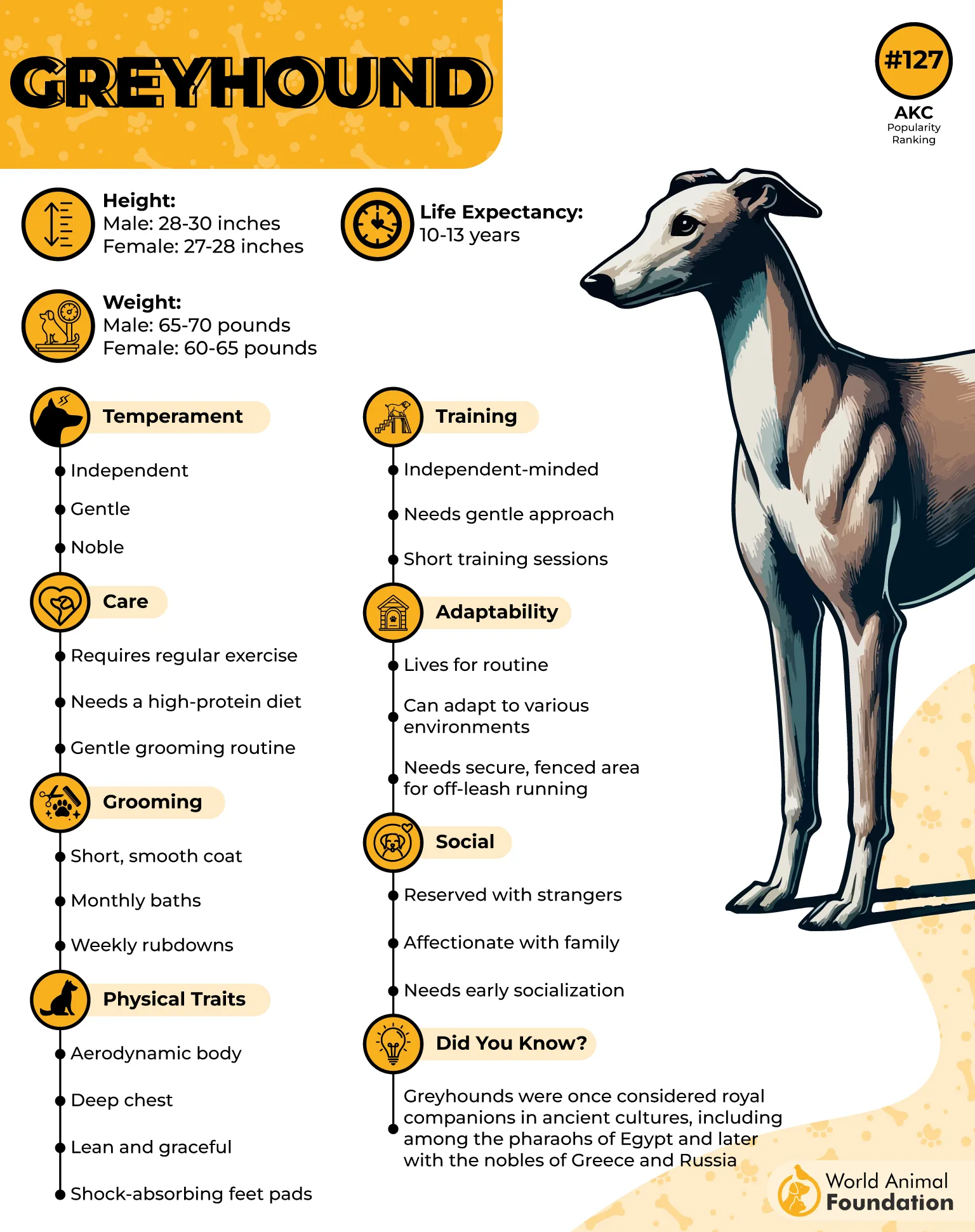
Orvis states that these dogs are alert and gentle, which makes them ideal for calm homes. They’re polite around guests, great with older kids, and rarely bark. Their laid-back energy can help soothe anxious humans, kind of like living with a walking weighted blanket. Socially, they get along with other dogs, especially other sighthounds. Small pets might trigger their chase instinct, so supervision is key.
Greyhounds are easy to train, especially when food is involved. They might not be into performing tricks all day, but they’ll happily learn the essentials. Their calm temperament also makes them solid candidates for therapy or emotional support work. They don’t need hours of exercise—just short bursts of sprinting or a daily walk will do.
Even with their short coats, Greyhounds handle warm weather better than cold. Brindle patterns show up beautifully on their smooth fur, but their skin can be sensitive to sunburn. You might even catch them sunbathing with a blissed-out grin on a sunny day.
4. Staffordshire Bull Terrier
Staffordshire Bull Terriers, often called “Staffies,” are muscular and full of energy. Their brindle coats—ranging from deep stripes to lighter hues—give them a striking appearance. These dogs typically live for 12–14 years and stay active and loving throughout their lives.
Despite their rugged appearance, Staffies are known for their affectionate nature, especially with children, says WebMD. Their loyalty and gentle demeanor have earned them the nickname “nanny dog,” as they’re fantastic family companions, loving and protective in equal measure.
Training a Staffie is possible but requires consistency. They’re clever and eager to learn, though they can be a little stubborn at times. Using positive reinforcement and patience helps them shine in obedience training and strengthens the bond with their owner.
Staffies thrive on physical activity. They love daily walks and playtime, and their athleticism makes them great at agility. If you’re an active person, they’ll happily keep up, making them an ideal choice for someone looking for both a loyal and energetic companion.
Their protective instincts make them excellent watchdogs, but they’re not overly aggressive. Early socialization with other pets and people ensures they remain friendly. With the right approach, they can coexist peacefully with other animals.
5. Bull Terrier
Bull Terriers are easily recognized by their distinct egg-shaped head and muscular frame. Their brindle coat adds a unique touch to their tough exterior, with dark and light stripes that make each one a little different. These dogs typically live between 10–14 years and are known for their playful, energetic nature.
Bull Terriers are incredibly affectionate and love being the center of attention, says the AKC. They’re known for their clownish behavior, often doing silly things to get a laugh. Their fun-loving attitude makes them fantastic family companions, especially for active households.
Training a Bull Terrier requires patience and consistency. They are independent thinkers, which can make them a challenge to train, but they’re intelligent and eager to please when motivated correctly. Positive reinforcement works best with this breed, and they’ll reward you with loyalty and love.
Bull Terriers are also known for their bravery and protective instincts. While they’re generally friendly, they will defend their family if they sense danger. Early socialization is key to ensuring they grow up well-adjusted and confident in various environments.
Their high energy levels mean they need regular exercise to stay happy. Daily walks, playtime, and some mental stimulation will keep them fit. They enjoy interactive activities, and their playful nature ensures they’ll keep you entertained for years to come.
6. Whippet
Whippets are often described as “mini Greyhounds,” but they’ve got a vibe that’s all their own. Their brindle coats add streaks of elegance to their sleek frames, creating a look that’s both sporty and refined. With a lifespan of 12–15 years, they stay sprightly and full of charm well into their golden years.
Despite their athleticism, Whippets are total couch potatoes indoors. They’ll rocket across the backyard one minute and then melt into your lap the next. This “zoom and snooze” lifestyle is what makes them ideal for people who want bursts of energy, not constant chaos.
These dogs are gentle by nature and tend to avoid conflict, says PDSA. They’re great with kids, tolerant with other dogs, and love to quietly tag along wherever you go. If you’ve ever wanted a sweet-natured sidekick who doesn’t bark your ear off, a Whippet fits the bill. Whippets are surprisingly adaptable and do well in apartments or homes, as long as they get their daily sprint.
Their slim frame and low body fat mean Whippets need protection in the cold. A snug doggy sweater or jacket isn’t just cute—it’s essential. Ever seen a Whippet shiver dramatically in 60-degree weather? It’s almost award-winning.
Brindle Whippets come in a variety of tones, from dark tiger-like stripes to lighter, sandy patterns. Their short, fine coat requires little grooming—just a quick brush every so often. Plus, they hardly shed, which makes life easier for allergy-sensitive homes.
7. Basenji
Basenjis might look small and elegant, but there’s a ton of personality packed into that sleek brindle body. Their coats often combine rich chestnut and black striping, giving them a wild, jungle-cat vibe. And yes—they really don’t bark, but they’ll “baroo” at you with surprising sass.
They’re known for being one of the cleanest dog breeds out there—seriously, they groom like cats. That means less doggy odor, minimal shedding, and a dog that actually hates getting muddy. Sounds dreamy, right? But don’t mistake their tidiness for low energy—they’re fast and full of mischief.
Basenjis are fiercely independent and intelligent enough to outwit the average owner, says Orvis. If you leave them alone too long or without enough to do, they’ll find their own “projects.” Chewing the corner of your favorite rug? Yeah, that might happen.
They aren’t overly cuddly but form deep bonds with their chosen humans. Expect loyalty without clinginess. Basenjis often show affection by simply sitting near you or quietly watching your every move from across the room—kind of like a tiny detective.
These dogs are ancient—like, featured-in-Egyptian-art ancient. That primal edge is still visible in their behavior, which leans more wild than domestic. But in the right home, they bring a sense of wonder, mystery, and charm few breeds can match.
Fun Fact: Basenjis don’t just avoid barking—they also don’t have the typical “dog smell” and will actually throw a fit if forced into the rain. High standards? Definitely.
Conclusion
When it comes to brindle dog breeds, there’s something captivating about those tiger stripes, black markings, and that rich brindle coat pattern. Whether you’re drawn to a short-haired pup with a sleek coat or a fluffier one with a double coat, these dogs truly stand out. From the mighty Great Dane and protective Cane Corso to the compact Cairn Terrier and energetic Jack Russell Terrier, brindle breeds come in all sizes—but many share one major perk: a long lifespan and a calm demeanor that makes them ideal family pets.
Each specific breed brings something unique—some, like the Dutch Shepherd or Treeing Tennessee Brindle, have strong service animal potential thanks to their brains and loyalty. Others, such as Staffordshire Terriers, Bull Terriers, or French Bulldogs, make great companions with minimal grooming needs. You’ll find white markings, white feet, erect ears, or even a tail tip that adds to the beauty of their brindle coloring. And let’s not forget the rarer reverse brindle or blue merle varieties, which add even more diversity to the gene pool.
No matter if you love huge dogs like mastiffs, gentle giants with intimidating appearances, or smaller breeds like the Cardigan Welsh Corgi, there’s a brindle pup out there that matches your lifestyle. With just weekly brushing and the occasional bath, most are fairly low maintenance. From ancient breeds like the Basenji of Central Africa to modern favorites like the boxers or those featured on sites like Spruce Pets, brindle dogs are more than just a color pattern—they’re loyal, fun-loving pets with personality, heart, and longevity.


